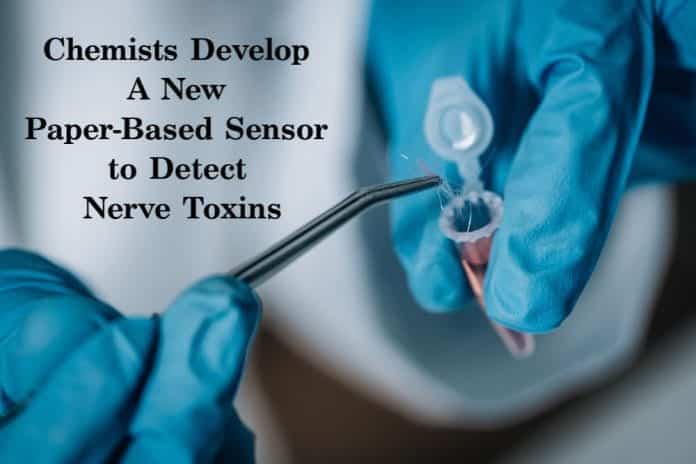Paper-based Nerve Toxin Sensor, A New Sensor Developed by Chemists
Scientists at the University of Alberta, the chemists from the Department of Chemistry have developed a new paper-based sensor, which can detect potent never toxins like paraoxon and parathion. This paper-based never toxin sensor is combined with silicon-based quantum dots which creates a sensor for detecting the presence of nerve toxins along with a smartphone application.
The sensor detects these powerful toxins using the silicon-based quantum dots which turns the paper sensors to green or yellow in color, depending on the toxin quantity present. The study shows that in a sample, the estimation of paraoxon or parathion quantity can be accurately done using a commercial smartphone application.
The co-author of the study, Jonathan Veinot along with a Ph.D. student Christopher Robidillo from the Department of Chemistry says, “The nerve agents parathion and paraoxon have been used as pesticides. As these substances are potent, accurate detection of them is very important. Depending on the exposure and treatment, they are capable of killing within minutes. In chemical warfare, both of these nerve toxins have been used.”
The study team used a combination of a protein which is green fluorescent (green fluorescent protein
or GFP) with silicon-based quantum dots which when exposed to parathion and paraoxon, does not luminesce.Robidillo added, “Samples from the environment can be tested to detect the presence of the never agents using the sensors. It is possible to estimate the number of nerve agents present using a smartphone application and when compared to simple visual evaluation, this is more reliable.”
Robidillo conducts aspects of his research in Munich, Germany. NSERC CREATE program funds Robidillo, Alberta/Technical University of Munich International Graduate School for Hybrid Functional Materials (ATUMS) program’s student.
ACS Applied Materials & Interfaces published this study.
Editors Note: New Paper-based Nerve Toxin Sensor Developed, Detecting parathion and paraoxon using a Paper-based Nerve Toxin Sensor.






























